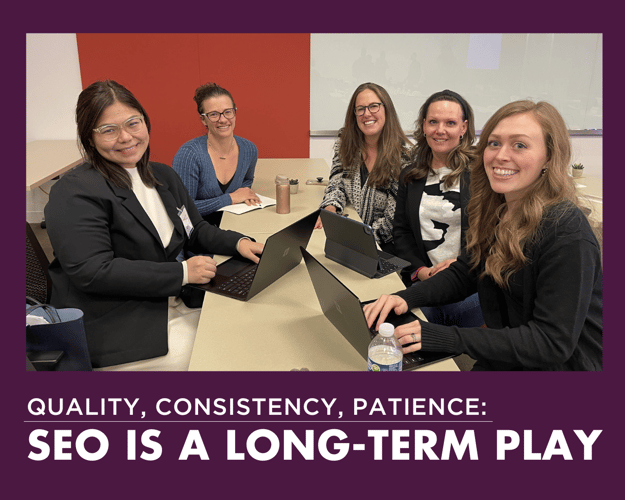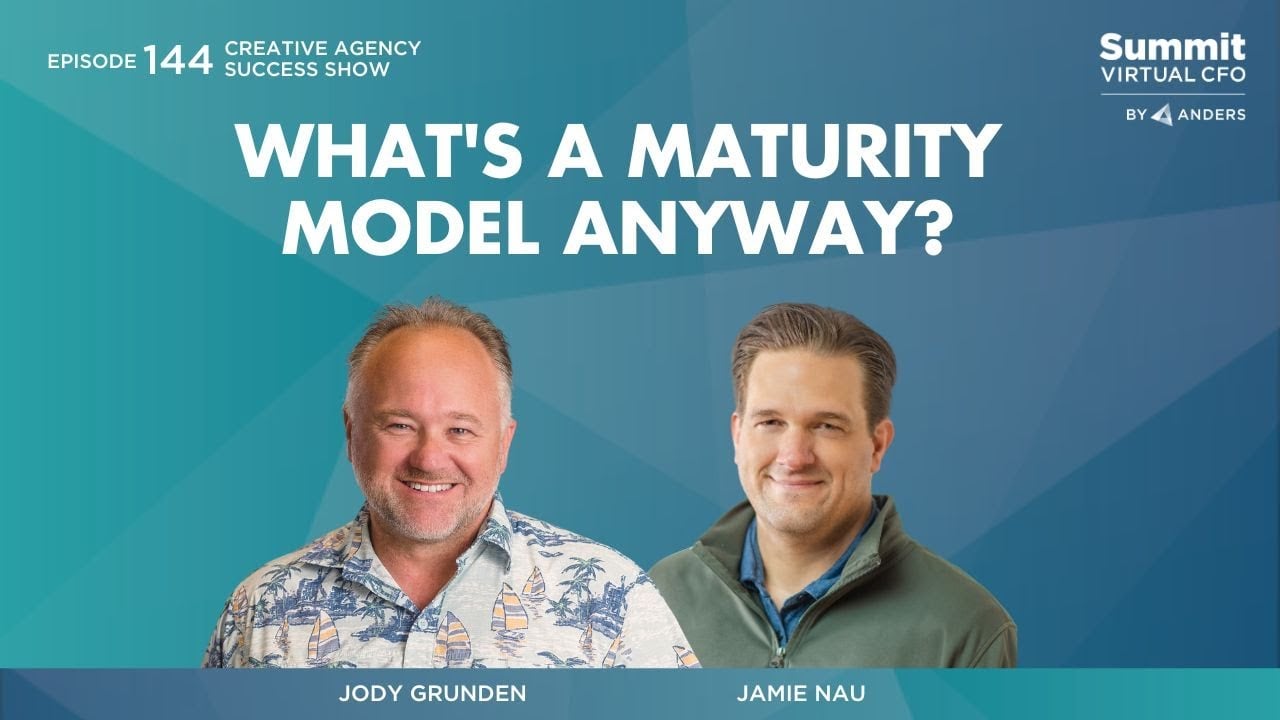A Conversation with SEO Optimizer’s Brandon Leibowitz
Can you imagine ranking at the top of a search results page within a week of launching a new business?
That’s what happened in the early 2000s when we started offering virtual CFO services.
The catch?
Back then, very few people were searching for those keywords because we essentially invented the concept and decided on a name.
As virtual CFO services got more popular, we had to up our SEO game. To stay relevant, that meant blogging almost daily for years and, eventually, adding in other channels including video, social media and e-books.
But with SEO, “what worked yesterday, might not work today,” says Brandon Leibowitz, owner of SEO optimizers. “There is no constant. There’s only change.” 
I’ve always been a big believer in content marketing. For businesses who want to do things differently, thought leadership is a natural strategy. When you create something new, you need to educate potential clients, or they’ll never come looking for you.
Many of the businesses we work with – CPAs, digital agency owners, law firms, cannabis retailers, transportation and logistics companies to name a few – are in a similar position. And we’re all wondering about the direction of SEO today, especially now that ChatGPT is on the scene and Google is shifting its algorithm on, what seems like, a daily basis.
How much of our revenue should we allocate for marketing? Where should those funds go: content production, pay-per-click, or something completely new? How long will it take before we see results?
I wanted to learn more about the current state of SEO from someone on the front lines. So, I sat down with Brandon to get his best advice for small businesses starting in the world of SEO or looking to adjust their strategy to the current landscape.
Here’s what he shared.
How Much to Invest in SEO (and Why)
When we work with small businesses that are looking to grow aggressively, we always take a look at their marketing budget to make sure their spending is in line with their goals. Sometimes business owners have the mentality of wanting to keep marketing costs down, because they think it will eat into their profit, but our approach has always been to see marketing as a growth engine.
Brandon agrees. When he works with a company that hasn’t invested in marketing yet, he shows them the search volume of keywords – and then explains how much traffic they’re missing by not going after those words.
“Whatever business they're in, I say, ‘All right, if you're a dentist, here's how many people search for dentists near me and your specific city.’ I show them on paper how many people search and how much traffic they’re letting their competitors take.”
How much should a growing business spend on marketing? Brandon says somewhere between 5-10%, depending on the competitiveness of their keywords.
That’s in line with our strategy at Summit. We’ve always spent between 7-11% of our revenue on content marketing, rather than paid ads. It’s way more than the average accounting firm spends, but it also gives us a higher close rate and a higher average customer value.
Quality Content Beats Quantity
The internet is so much more crowded today than when we got started with our content marketing strategy. The past decade has produced a deluge of content, a lot of it created with the sole objective of ranking high in Google’s search algorithm.
But someone launching a new website today would not be rewarded for cranking out high-volume, low-quality material. Rather than encouraging a flood of content that crowds the internet and makes it hard for people to find what they actually want, now Google is punishing spammy websites.
That’s a welcome development for serious businesses and for the customers they hope to attract – but it also creates a gray area. Quantity is easy to measure and to control, but quality is subjective. When we produce content, we always think about the humans reading it and whether it will be valuable to them; but in the world of SEO, we need to understand how the algorithm determines quality and keep that in mind while we are creating.
“With quality, Google is looking for EEAT– experience, expertise, authoritativeness, and trust,” Brandon explains. “They're trying to make sure that you are knowledgeable, and that you seem like an expert in this content. To do that, you’re providing depth and real-life examples, not just filler.”
So, what happens if you’re struggling to produce this kind of quality? Are there tools that can help?
“Let's say you're writing an article about the best umbrellas for rain,” Brandon says, “There are tools that will say, ‘you might want to put keywords and synonyms in there like ‘rain’, ‘umbrella’, ‘rain umbrellas’ and ‘rainstorm umbrellas.’ There are tools that will scrape the top ten results and look for common trends.”
However, when it comes to EEAT, Brandon says, tools will only get you so far. “Building that expertise, experience, authority and trust has to come from the writer themselves, going deeper into those topics and providing value to the reader. They want you to give a good user experience and provide answers to questions that people have and not just try to beat Google's algorithm.”
That kind of in-depth writing takes time, and time is money.
“Instead of trying to put out ten pieces of content per month, focus on two high-quality pieces,” Brandon recommends.
Build Trust through Backlinks and Social Media
Once you’ve put good quality content on your website so that Google knows what keywords you're targeting, the next step is to build that trust by getting backlinks (a clickable link from another website that points to yours).
Brandon recommends the same quality-over-quantity strategy with backlinks as he does with content: It’s always better to have one or two high quality backlinks than 10 spammy ones.
Social media accounts – Facebook, Instagram, Twitter, LinkedIn, YouTube, Pinterest – should be part of the trust-building strategy. “Google can’t really see how active you are on most of those platforms,” Brandon says, “but they can see how much traffic is being sent to your website from Facebook or Instagram. If Facebook has sent you 100 people today, that means that you must be somewhat relevant on Facebook. So the algorithm rewards you a little bit by giving you a little bit more trust because it sees these social signals coming in.”
Stay the Course
If you’re growing your business from a one- or two-person operation, there’s probably a period of time when you’re bringing in seven figures of revenue and you’re still wearing the marketing-sales hat.
When you do bring on a dedicated marketing person or department, the expense can feel like a lot. We’ve always spent 7-11% on our marketing budget – with none of that allocated to paid ads – hitting the higher end during periods of ambitious growth.
With that amount of money flowing out of the account, the natural question becomes: How fast can I see a return on the investment?
“It’s not going to be instantaneous,” Brandon says. “Everyone wants instantaneous.”
Several factors determine how long it will take for your website to rank on Google’s coveted first page of search results. The newer the website and the more competitive your keywords, the longer it will take.
If you have a brand new domain name, you have to be patient. The only shortcut, Brandon notes, is to buy old, expired domains. “That’s not always the best situation,” he acknowledges, “because then you don't get to control your brand name. You’re just at the whim of some other company's name.”
When we talk about the keywords, however, you can rank faster if you pick less competitive targets. That’s where niching comes into play.
The Benefits of Niching
Anyone who knows me knows my feelings about the benefits of niching: When you develop focused expertise in a given vertical, industry or service, you become the go-to person in that world, a true thought leader. You’re competing for fewer clients, but they are better quality clients – and you’re able to serve them more efficiently and effectively.
You also benefit in the world of SEO, because you’re able to target less competitive keywords. It would be pretty difficult to break onto page one for “website developer” versus “website developer for pest control companies.”
For businesses that have had their website for a while, introducing these specialty pages should allow them to gain traction relatively quickly. If Google already trusts your website, and then you introduce a new line of service using keywords that are not very competitive, you can rank in just a few months. But if you have a new website and competitive keywords, expect it to require a bigger investment of time and money.
Beyond SEO Optimization: Remarketing Ads
Once you get people coming to your website, you want to look at your bounce rate: people who visited your website but left – usually around 50% of visitors.
To reach those warm leads, Brandon recommends remarketing ads: “Visitors go to your website and they leave. With higher ticket items, you typically need multiple touch points to build trust. Remarketing ads allow you to follow those visitors around with banner ads and offer them something free, like an e-book or course, to get them into your funnel or to get them to follow you on social media. That’s how you get those touch points showing that you're knowledgeable, credible, trustworthy.”
Cold outreach with paid ads can work, Brandon notes, but it's expensive: “That's where you just have to make sure that you're getting a positive return on ad spend. If you're making more than you're putting in, there's no real reason to turn it off.”
Still, he recommends remarketing over pay-per-click ads because keeping yourself top-of-mind with warm traffic always works better than cold outreach.
The Future of Content Marketing
For business owners investing significant time and money in content marketing, there’s a nagging question: Is this going to be relevant five years from now? What if things take a left-hand turn?
“Everything changes so quickly,” Brandon says. “No one knew ChatGPT or AI was going to take such a strong market share so quickly. We'll have to see what the future holds. It's tough to predict what's going to happen. Things come out of nowhere really fast.”
Whatever comes down the line, SEO optimization is the long-term play. It’s not going to immediately solve your problems, so put in the work, spend the money, create quality content based on genuine thought leadership, and stay the course. If we see AI changing the terms of the game, then we may all have to pivot and incorporate that as another tool in the toolbox.
.png?width=120&height=77&name=Summit-Virtual-CFO_color_rgb%20(1).png)














